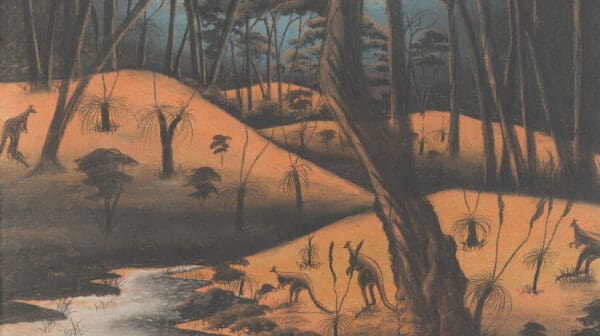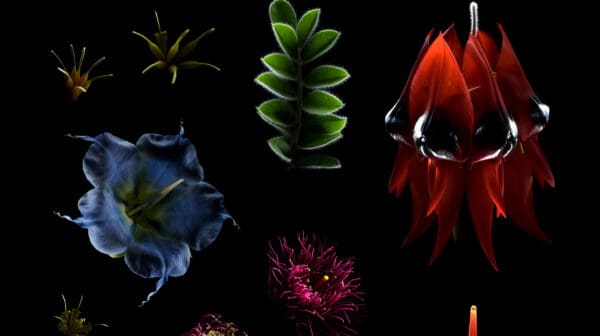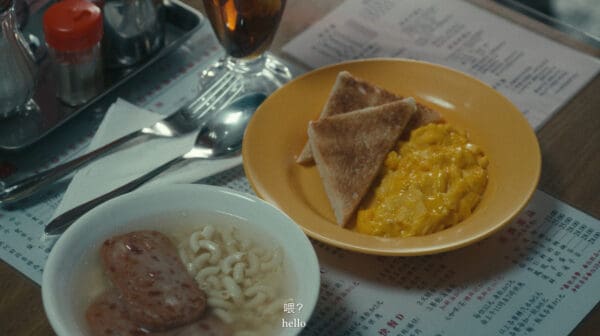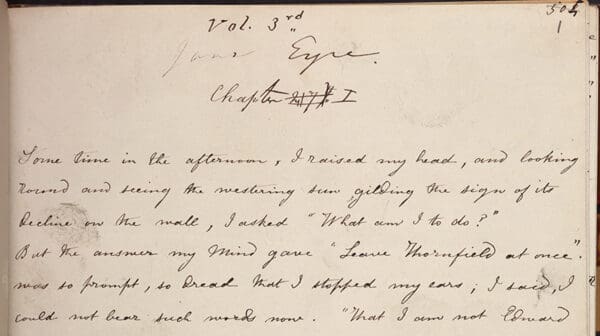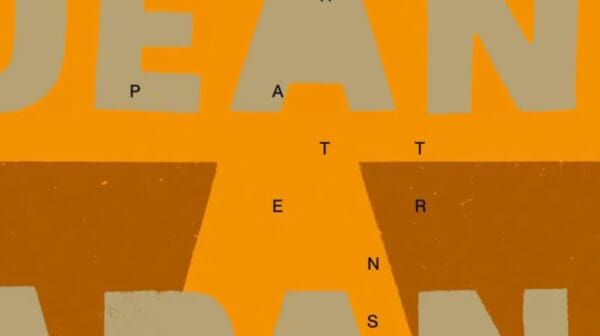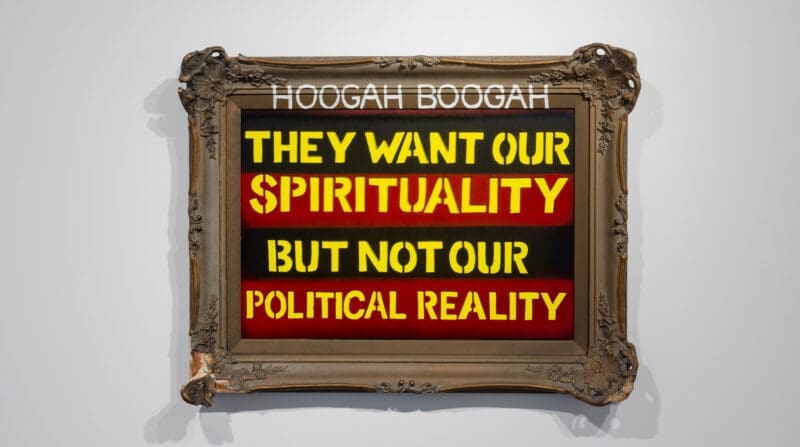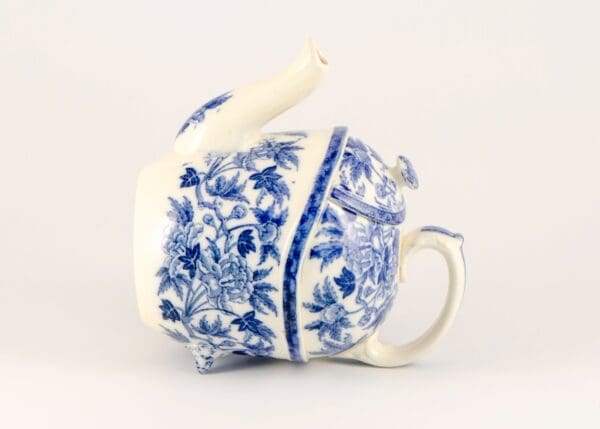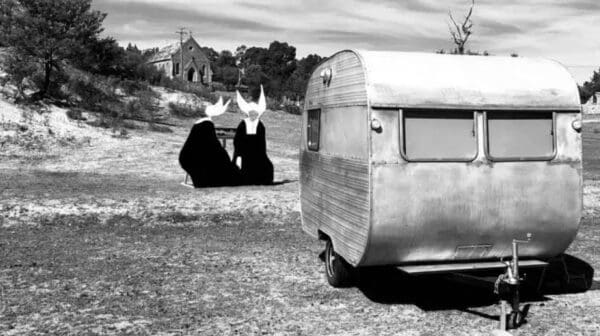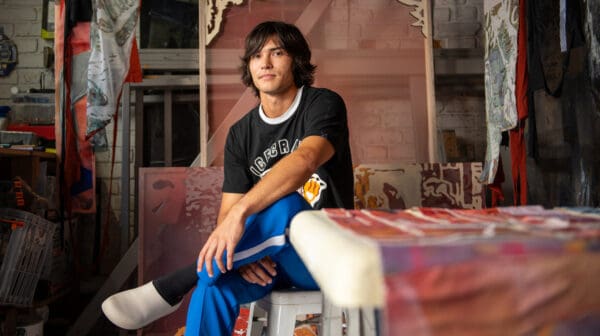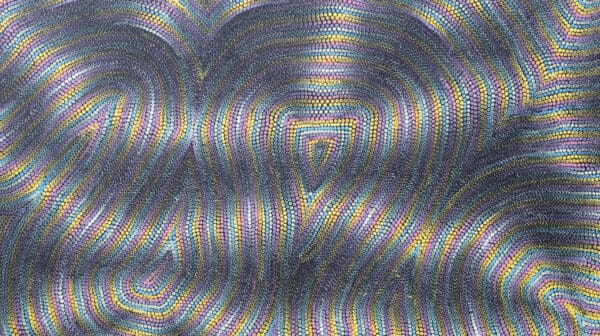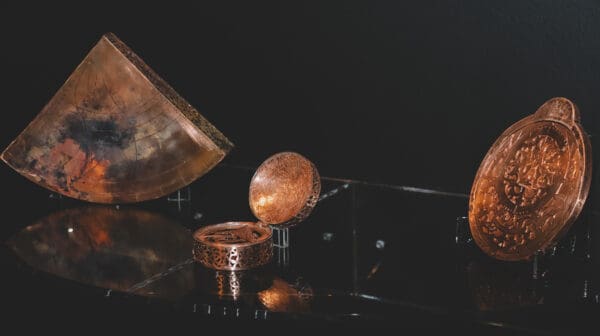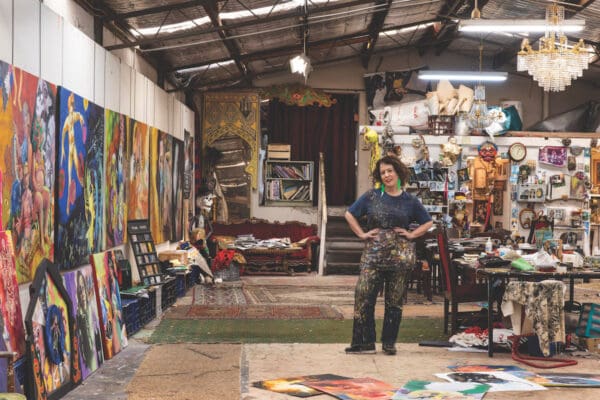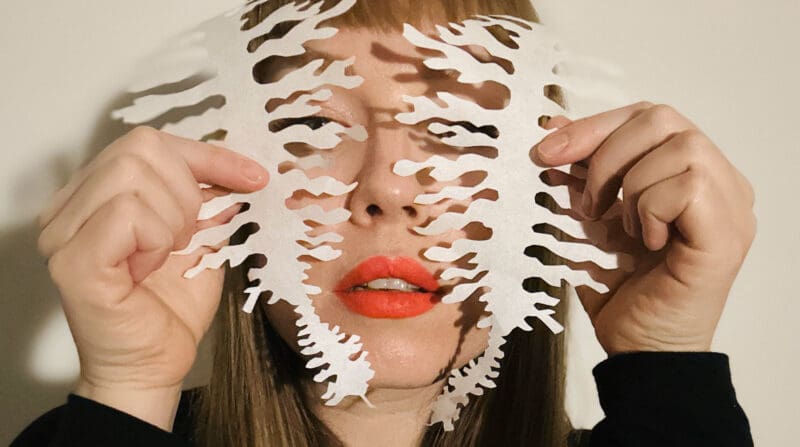
Elysha Rei’s windows into history
Elysha Rei’s exhibition Shirozato to Shinju (White Sugar and Pearls) at Umbrella Studio Contemporary Arts, Townsville QLD, explores the interconnected histories of the Japanese diaspora in Australia.
Elysha Rei’s exhibition Shirozato to Shinju (White Sugar and Pearls) at Umbrella Studio Contemporary Arts, Townsville QLD, explores the interconnected histories of the Japanese diaspora in Australia.
Described as “a space for reflection, remembrance, and the sharing of truth”, Kattidj Nagãr, now showing at John Curtin Gallery, is dedicated to the Aboriginal people who once resided at the Carrolup Settlement in Western Australia.
With an approach to artmaking drawn from the “fieldwork of life”, twin brothers and artistic collaborators Man&Wah, who are now showing at 4A Centre for Contemporary Asian Art, use plant migration to explore duality and movement.
Premiering at the Sydney Film Festival, artist, curator and filmmaker Nikki Lam’s The Unshakeable Destiny trilogy, shot on 16mm, Super 8 and digital, explores her hyphenated identity as a “settler-migrant”, through an upbringing in “city-state” Hong Kong and the enduring influence this has over her artistic practice in Australia.
Now showing at HOTA, Writers Revealed is an ambitious exhibition covering six centuries, presenting manuscripts, letters, illustrations and rare editions from many of the most influential authors in English literature.
As I walk through the suburban streets, I find myself thinking about the publication Speech Patterns: Nadia Hernández & Jon Campbell. It accompanied their two-person exhibition at The Art Gallery of Western Australia in 2022, which explored their shared preoccupations with class, identity and value systems.
Waanyi artist Gordon Hookey has been creating artwork for more than three decades. Describing his style as pictograms of a scenario, with images and symbols connecting a sprawling narrative, Hookey’s work, which is now showing at Plimsoll Gallery, is imbued with elements of activism, pop culture and lived experience.
An exhibition at Perc Tucker Regional Gallery pays tribute to Staffordshire-born Josiah Wedgwood (1730-1795) and his eponymous pottery company, featuring rare, valuable and ornate pieces, as well as “grandma’s good china”.
Community is the foundation of Claire Conroy’s exhibition at Lismore Regional Gallery. As a new arrival to the area, her art practice ties her to fellow artists, while her medium, camera obscura, allows for a deepening of social connections with her sitters as they commit to the shoot.
Step inside Remy Faint’s inner-city Sydney garage, where he meticulously constructs every element of his artworks—from wooden frames and sculpted fabric to striking, multilayered paintings in silk. Faint is now showing at the Rockhampton Museum of Art.
Inspired by different genres of fiction and digital media, the artists in Ghost in the Machine at Outer Space, Brisbane consider avatars, ghosts, masks and levels of embodiment to ask: what if I’m more real when I’m projecting?
In Queer Territory at the Northern Centre for Contemporary Art, Darwin, curator Maurice O’Riordan has drawn together diverse works from the 1980s to the present day to present a snapshot of queer practice in the Territory.
Taking an expanded approach to Indigenous curatorial practice, the ninth TarraWarra Biennial features work responding to themes of regeneration, restoring spirit, and disrupting colonial space. Three artists discuss their contributions.
Curated by artistic director Hoor Al Qasimi, the program is centred by the theme of Rememory. Originating from author Toni Morrison, the ideas seek to explore the intersection of memory and history—revisiting, reconstructing and reclaiming histories that have been erased or repressed.
Wendy Sharpe’s expressive paintings incorporate social criticism and otherworldly dreamscapes, blending the real and imagined. With a current exhibition at Philip Bacon Galleries, she reflects on her three-decade practice and that iconic painting of Magda Szubanski.
